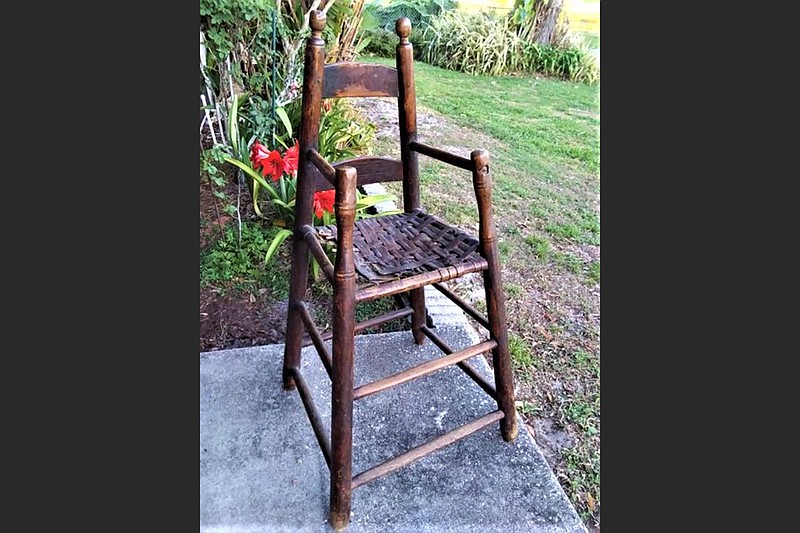DEAR HELAINE AND JOE: Recently, I found what appears to be a very early child's highchair. I think it could be as early as the late 18th century. Am I correct that this chair is an early survivor of the distant past with very good patina and remnants of its original red paint? Where do you think it was made?
Thank you, — F.R.
DEAR F.R.: When this piece was new, people did not run down to the local furniture store to buy what they needed to furnish their houses. In short, everything was handmade and to order.
In some cases, there might be a local cabinetmaker making fancy furniture for fancy homes and perhaps another cabinetmaker in the area who specialized in making more utilitarian pieces for less fancy domiciles.
But when this charming highchair was made, it was probably crafted at home as a labor of love for a very young child or grandchild.
The turnings on the piece are very simple, the kind that did not require the fancy equipment a professional cabinetmaker might have. The most difficult part for the home craftsman who made it was probably the finials on the chair's side posts. The maker may have been going for an acorn shape, but they achieved an oval egg shape with a scribe line around the middle.
Once a chair like this was made, it was used by not just one child, but by the generations of children who followed. The split oak seat probably had to be replaced every 30 years or so during the period of its active use as a highchair, but the current seat appears to be mid-19th century or maybe a tad bit later.
As for the vestiges of red paint, this may or may not be original, but it is old, and like the split oak seat it has probably been with the chair since at least the mid-19th century. As for the age of the chair itself, it appears to have been made in the 1780 to 1820 time frame. A circa 1800 date is probably what we would assign to the piece.
As for its place of origin, all we can say is it was probably made somewhere in New England. Without more information we cannot rule out New York, Pennsylvania or Maryland. It would help to know where F.R. bought the chair, and where the person from whom she bought it found it. These two bits of information could help immensely.
As for the monetary value, it is enhanced by both the fragmentary red paint (which should never, ever be touched except for a gentle cleaning) and by the old but not necessarily original split oak seat. It has a wonderful folky quality that should appeal to many collectors who love this sort of American children's furniture.
For insurance purposes, the highchair should be valued in the $1,200 to $1,500 range.
Helaine Fendelman and Joe Rosson have written books on antiques. Do you have an item you'd like to know more about? Contact them at Joe Rosson, 2504 Seymour Ave., Knoxville, TN 37917, or email them at treasures@knology.net. If you'd like your question to be considered for their column, please include a focused, high-resolution photo of the subject with your inquiry.
